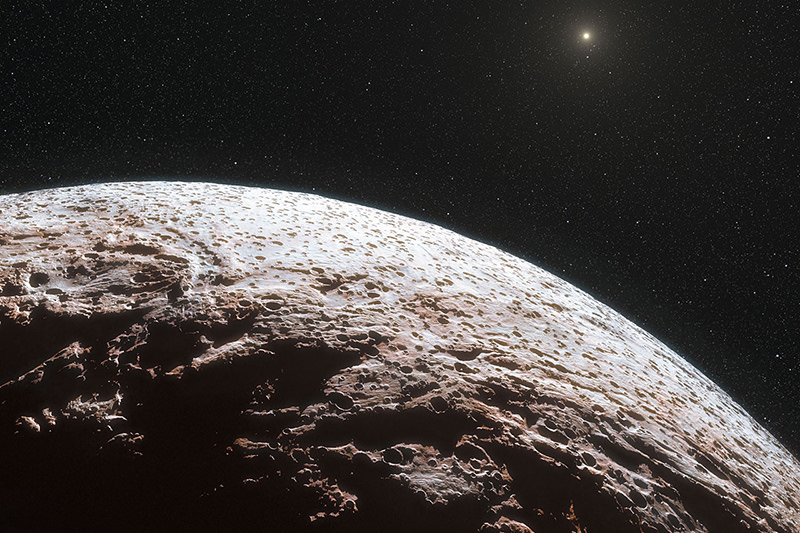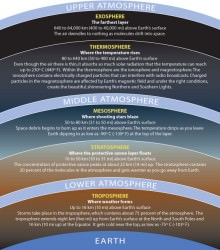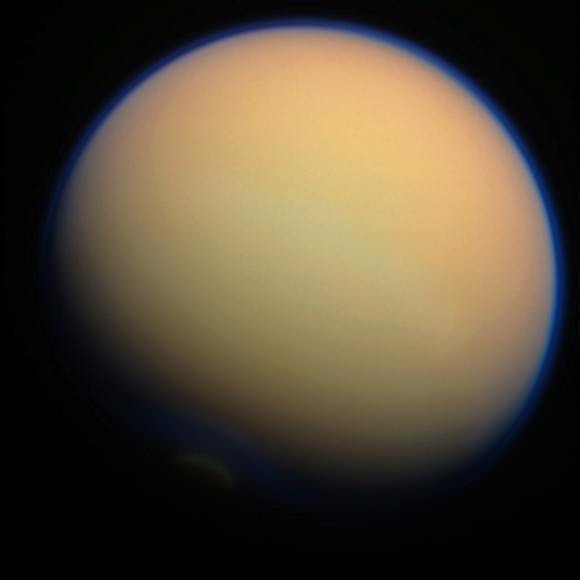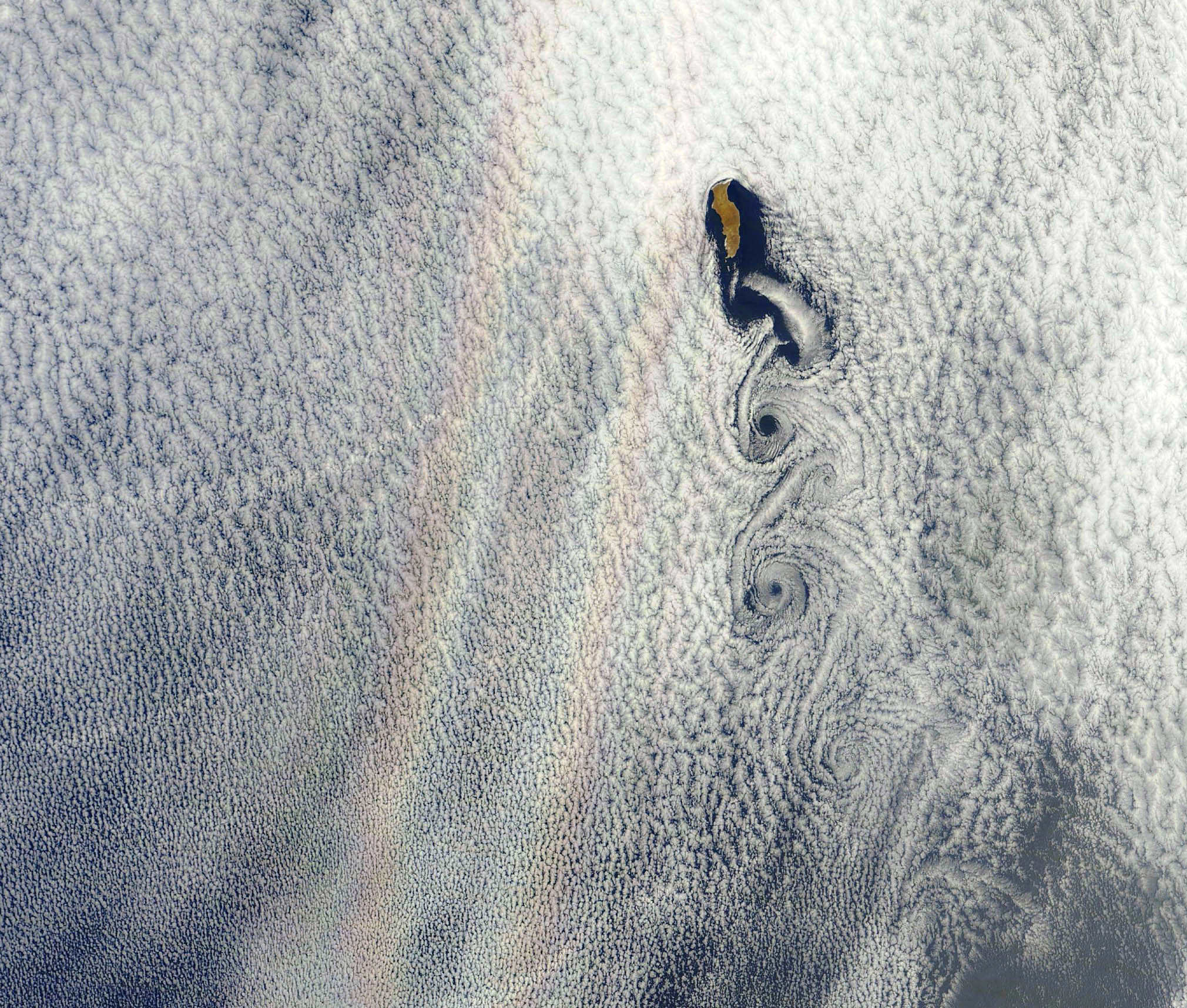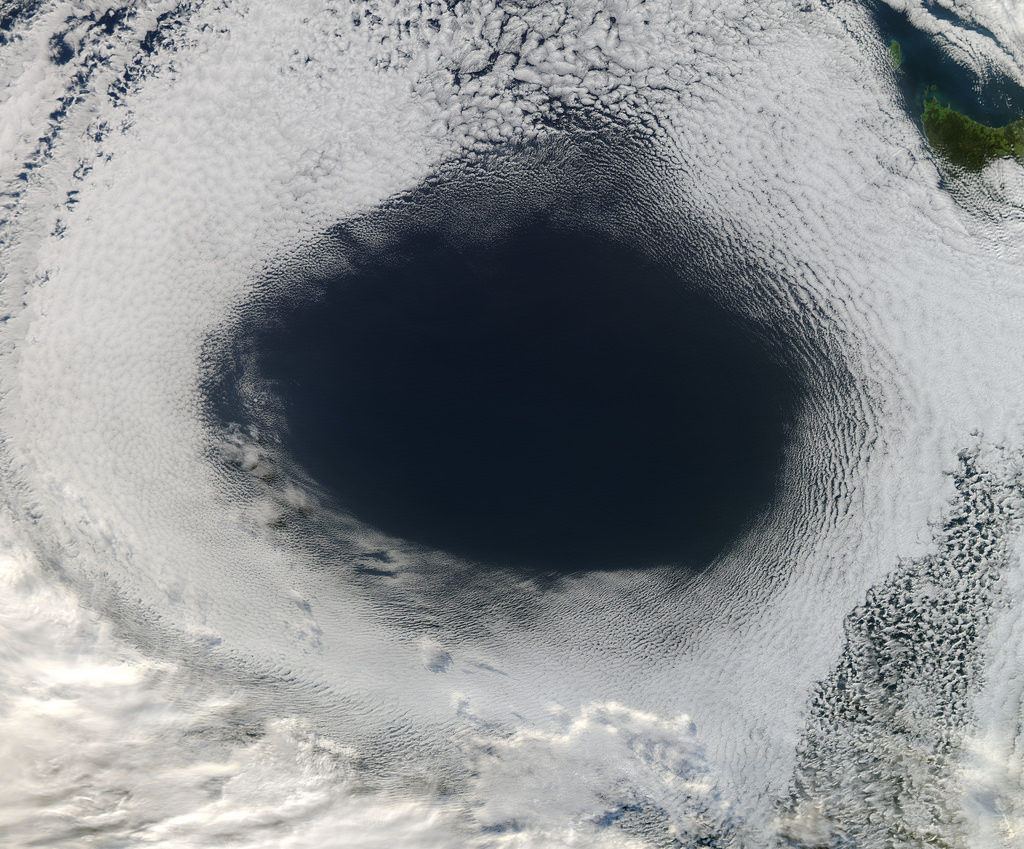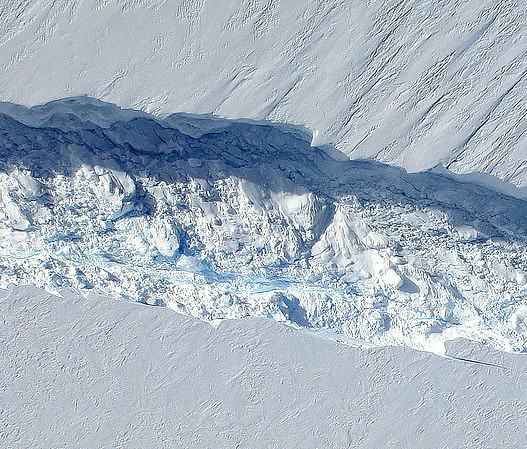Artist’s impression of the surface of Makemake, a dwarf planet beyond Pluto (ESO/L. Calçada/Nick Risinger)
It turns out there’s no air up there: the distant dwarf planet Makemake is surprisingly lacking in an atmosphere, according to findings made by astronomers using telescopes at ESO’s La Silla and Paranal observatories.
An international team of astronomers used the mountaintop telescopes to observe Makemake as it passed in front of a faint background star in April 2011, a brief stellar occultation that lasted only about a minute. By watching how the starlight was blotted out by Makemake, measurements could be made of the dwarf planet’s size, mass and atmosphere — or, in this case, its lack thereof… a finding which surprised some scientists.
“As Makemake passed in front of the star and blocked it out, the star disappeared and reappeared very abruptly, rather than fading and brightening gradually. This means that the little dwarf planet has no significant atmosphere,” said team leader José Luis Ortiz of the Instituto de Astrofísica de Andalucía in Spain. “It was thought that Makemake had a good chance of having developed an atmosphere — that it has no sign of one at all shows just how much we have yet to learn about these mysterious bodies.”
 First discovered in 2005, Makemake is an icy dwarf planet about 2/3 the diameter of Pluto — and 19 AU further from the Sun (but not nearly as far as the larger Eris, which is over 96 AU away.) It was thought that Makemake might have a tenuous, seasonal atmosphere similar to what has been found on Pluto, but it now appears that it does not… at least not in any large-scale, global form.
First discovered in 2005, Makemake is an icy dwarf planet about 2/3 the diameter of Pluto — and 19 AU further from the Sun (but not nearly as far as the larger Eris, which is over 96 AU away.) It was thought that Makemake might have a tenuous, seasonal atmosphere similar to what has been found on Pluto, but it now appears that it does not… at least not in any large-scale, global form.
Due to its small size, sheer distance and apparent lack of moons, making scientific observations of Makemake has been a challenge for astronomers. The April 2011 occultation allowed measurements to be made — even if only for a minute — that weren’t possible before, including first-ever calculations of the dwarf planet’s density and albedo.
As it turns out, Makemake’s albedo is about 0.77 — comparable to that of dirty snow… a reflectivity higher than Pluto’s but lower than that of Eris. Its density is estimated to be 1.7 ± 0.3 g/cm³, indicating a composition of mostly ice with some rock.
“Our new observations have greatly improved our knowledge of one of the biggest [icy bodies], Makemake — we will be able to use this information as we explore the intriguing objects in this region of space further,” said Ortiz.
Read more on the ESO release here.
The team’s research was presented in a paper “Albedo and atmospheric constraints of dwarf planet Makemake from a stellar occultation” to appear in the November 22, 2012 issue of the journal Nature.
Inset image: Makemake imaged by Hubble in 2006. (NASA/JPL-Caltech)

